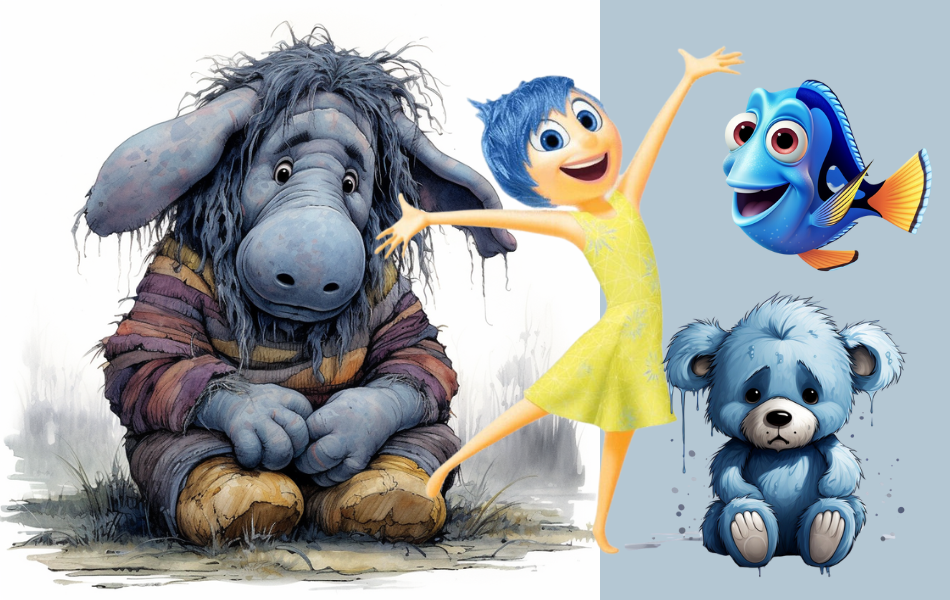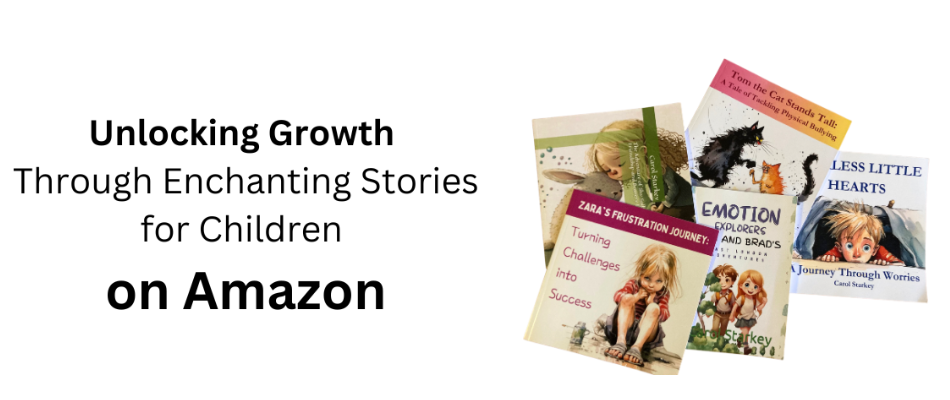Build a solid emotional foundation with My Kids’ Emotions! Explore practical tips, engaging stories, and resources for nurturing emotional literacy in children.
Welcome to My Kids Emotions’ main menu page, the Foundation for nurturing your child’s emotional well-being. Here, we delve into the essence of Emotional Literacy, equipping parents with essential tools to navigate their children’s emotional landscapes. Emotional Literacy forms the bedrock of a child’s development, influencing academic success, social connections, and long-term mental health. Join us on a journey to lay the Foundation for resilient, emotionally intelligent kids who thrive in every aspect of their lives.
Please read my other articles in all categories to give you a greater understanding of Your Kids’ Emotions.
Emotional Literacy Defined

Emotional Literacy is the ability to recognize, understand, and effectively manage emotions in oneself and others. At its core, it involves developing a nuanced vocabulary for emotions, discerning their origins, and responding appropriately. This multifaceted skill set empowers individuals to navigate social interactions, fostering healthier relationships and emotional well-being.
5 Examples of a Nuanced Vocabulary for Emotions
A. Emotion: Frustration
- Nuanced Vocabulary: Irritated, agitated, exasperated
- Discerning Origins: Difficulty in solving a problem, unmet expectations
- Appropriate Response: Encouraging problem-solving, offering support, teaching resilience
B. Emotion: Excitement
- Nuanced Vocabulary: Thrilled, elated, jubilant
- Discerning Origins: Success, positive anticipation
- Appropriate Response: Celebrating achievements, fostering a positive environment
C. Emotion: Sadness
- Nuanced Vocabulary: Melancholy, despondent, heartbroken
- Discerning Origins: Loss, disappointment
- Appropriate Response: Providing comfort, acknowledging feelings, offering a safe space
D. Emotion: Anxiety
- Nuanced Vocabulary: Nervous, apprehensive, uneasy
- Discerning Origins: Uncertainty, fear of the unknown
- Appropriate Response: Offering reassurance, teaching coping strategies, promoting mindfulness
E. Emotion: Contentment
- Nuanced Vocabulary: Satisfied, serene, fulfilled
- Discerning Origins: Achieving goals, feeling at peace
- Appropriate Response: Acknowledging accomplishments, encouraging gratitude, fostering a sense of well-being
Differentiating Emotions from Emotional Literacy

While emotions are the raw, instinctual reactions we experience, emotional literacy transcends these initial feelings. Emotions are the language of the soul, expressing joy, sorrow, or anger. Emotional literacy, on the other hand, involves understanding, interpreting, and effectively responding to these emotions.
It’s the ability to navigate this emotional landscape with finesse, using a nuanced vocabulary, discerning the origins of feelings, and responding appropriately. Emotional literacy transforms emotions from fleeting moments into valuable insights, fostering personal growth and enriching relationships.
The Foundation of Emotional Intelligence in Child Development

Emotional intelligence lays the crucial groundwork for a child’s holistic growth. It goes beyond academic achievements, forming the bedrock for social competence and lifelong well-being. A child equipped with emotional intelligence understands and manages emotions, empathizes with others, and navigates relationships effectively.
This foundation not only shapes their current interactions but also propels them towards a future marked by resilience, self-awareness, and the ability to forge meaningful connections—a cornerstone for a successful and fulfilling life journey.
Why Emotional Literacy Matters for Kids

It is the compass guiding children through the intricacies of human connection. Essential for academic success and mental well-being, it empowers kids to navigate challenges, understand their emotions, and build harmonious relationships. In fostering emotional intelligence, we cultivate a foundation for their future, nurturing resilient and socially adept individuals.
Impact of Emotional Literacy on Academic Success and Social Relationships in Kids
1. Academic Success:
Emotional literacy contributes significantly to academic achievement by enhancing cognitive abilities, attention, and memory. Children with strong emotional intelligence can manage stress, navigate challenges, and exhibit better self-regulation. This emotional resilience creates an optimal learning environment, allowing them to focus on tasks, problem-solve effectively, and adapt to new situations.
2. Social Relationships:
Emotional literacy forms the cornerstone of healthy social interactions. Kids who understand and express their emotions are better equipped to empathize with others, communicate effectively, and collaborate. This foundation fosters positive relationships with peers, teachers, and family members. It cultivates a sense of belonging, reduces conflicts, and promotes a supportive social environment, essential for emotional well-being and overall development.
In essence, emotional literacy acts as a catalyst for both academic success and positive social relationships, equipping children with the skills needed to navigate the complexities of both the academic and interpersonal aspects of their lives.
Long-Term Benefits of Emotional Literacy for Mental Health in Kids
1. Emotional Regulation:
Emotional literacy enables children to recognize and regulate their emotions effectively. This skill becomes a lifelong asset, allowing them to manage stress, anxiety, and other challenging emotions. This emotional self-regulation is a protective factor against mental health issues, promoting resilience in the face of adversity.
2. Healthy Coping Mechanisms:
Kids with strong emotional literacy develop healthy coping mechanisms. They learn to cope with setbacks, disappointments, and uncertainties in ways that are constructive. This adaptive coping contributes to emotional well-being, reducing the risk of developing maladaptive coping strategies that may contribute to mental health issues later in life.
3. Increased Self-Awareness:
Emotional literacy fosters self-awareness, helping children understand their strengths, weaknesses, and emotional triggers. This self-awareness is foundational for positive mental health, as it encourages a deeper understanding of oneself and promotes a more positive self-image.
4. Enhanced Interpersonal Relationships:
Effective communication and empathy, nurtured through emotional literacy, lead to healthier relationships. Positive social connections are integral to mental health, providing support systems that can mitigate the impact of stressors. Strong interpersonal skills cultivated in childhood contribute to fulfilling relationships in adulthood.
5. Resilience to Life Challenges:
Children with emotional literacy are better equipped to navigate life’s challenges. The ability to adapt to change, bounce back from setbacks, and maintain a positive outlook are crucial elements of resilience. These qualities are protective factors against the development of mental health issues in the face of life’s inevitable ups and downs.
In summary, the long-term benefits of emotional literacy extend to mental health by fostering emotional regulation, healthy coping mechanisms, increased self-awareness, positive interpersonal relationships, and resilience in the face of life’s challenges. Investing in emotional literacy during childhood sets the stage for a lifetime of mental well-being.
Connection between Emotional Intelligence and Self-Regulation
Emotional intelligence and self-regulation are intertwined facets of emotional well-being. Emotional intelligence equips individuals with the awareness and understanding of emotions, while self-regulation empowers them to manage these emotions effectively. Together, they form a dynamic synergy, fostering balanced emotional responses and resilient coping strategies.
The Building Blocks of Emotional Literacy
Embarking on the journey of emotional literacy involves understanding its fundamental building blocks to create the foundation. These essential elements, encompassing the nuanced language of emotions, insightful self-awareness, and empathetic social skills, collectively form the foundation upon which children construct their emotional intelligence, navigating life’s complexities with confidence and resilience.

Identifying and Labeling Emotions with Practical Terminology
Identifying and labeling emotions is the cornerstone of emotional literacy, providing children with a vocabulary to express their inner worlds. Practical terminology involves teaching them specific words for various feelings, moving beyond basic emotions like happy or sad. For instance, recognizing and using words like excited, frustrated, or elated helps children articulate their experiences more precisely.
Practical terminology also involves linking emotions to specific situations, helping children understand the triggers and contexts associated with different feelings. This process enables them to express themselves more accurately and allows parents and educators to offer targeted support.
In practice, activities like emotion charts, where children identify and label emotions depicted in pictures, or storytelling sessions where characters express a range of feelings, can be highly effective. These activities not only enhance vocabulary but also foster a deeper comprehension of emotions and their diverse manifestations.
By engaging in these practical exercises, children not only build their emotional vocabulary but also develop the crucial skill of recognizing and labeling emotions in themselves and others. This foundational step sets the stage for the more advanced aspects of emotional literacy, such as understanding the causes and effects of emotions and navigating interpersonal relationships with empathy and sensitivity.
Understanding the Causes and Effects of Emotions Practically

Understanding the causes and effects of emotions involves delving into the why and how behind our feelings. Practically, this process starts with encouraging children to reflect on the circumstances that trigger specific emotions. It’s about asking questions like, “What happened to make you feel this way?” This reflection helps children connect their emotional responses to external events or internal thoughts.
Practical exercises can include journaling or drawing to express emotions and identify their origins. For example, after a challenging day, a child might draw or write about what happened and how it made them feel. This not only aids in recognizing causes but also serves as a valuable tool for introspection.
Discussing the ripple effects of emotions is another practical aspect. By exploring how one’s feelings can influence actions, behaviors, and relationships, children learn about emotional accountability. For instance, understanding that expressing anger might affect others negatively encourages children to develop strategies for constructive emotional expression.
Challenges in Developing Emotional Literacy in Kids

Common Obstacles and Misconceptions
- Limited Vocabulary: Children may struggle with expressing emotions due to a limited emotional vocabulary.
- Fear of Judgment: The fear of being judged or misunderstood can hinder open expression.
- Misconception of Emotions: Children might confuse or misinterpret complex emotions.
External Influences on Emotional Development
- Parenting Styles: Parental approaches can impact a child’s emotional literacy; overly controlling or dismissive behaviors may hinder emotional expression.
- Environment: A chaotic or unsupportive environment may create stress, affecting a child’s emotional well-being.
- Peer Interactions: Negative peer interactions can contribute to emotional challenges and social difficulties.
Understanding and addressing these challenges involves fostering a supportive environment, encouraging open communication, and providing guidance to navigate emotional complexities.
Recommended Resources
Explore “Emotionally Enriching Stories: With Characters and Animals,” a blog on My Kids Emotions. Supplement your journey in fostering emotional literacy with curated books, articles, and tools. Dive into a world of enriching narratives that aid children in understanding and expressing their emotions through relatable characters and captivating stories.
Community and Support
Read through my other articles on My Kids Emotions and join my Facebook page. Connect with fellow parents in forums, share experiences, and seek advice. Discover a supportive space where collective wisdom thrives, fostering a sense of belonging and empowerment as we navigate the intricate terrain of raising emotionally resilient children together.
Conclusion
This menu category outline provides a comprehensive structure for exploring the foundations of emotional literacy in children and guides parents toward practical strategies and resources for fostering emotional intelligence in their kids.
| Emotional Literacy, Intelligence, and Cognition Differences Building Emotional Literacy in Kids |


